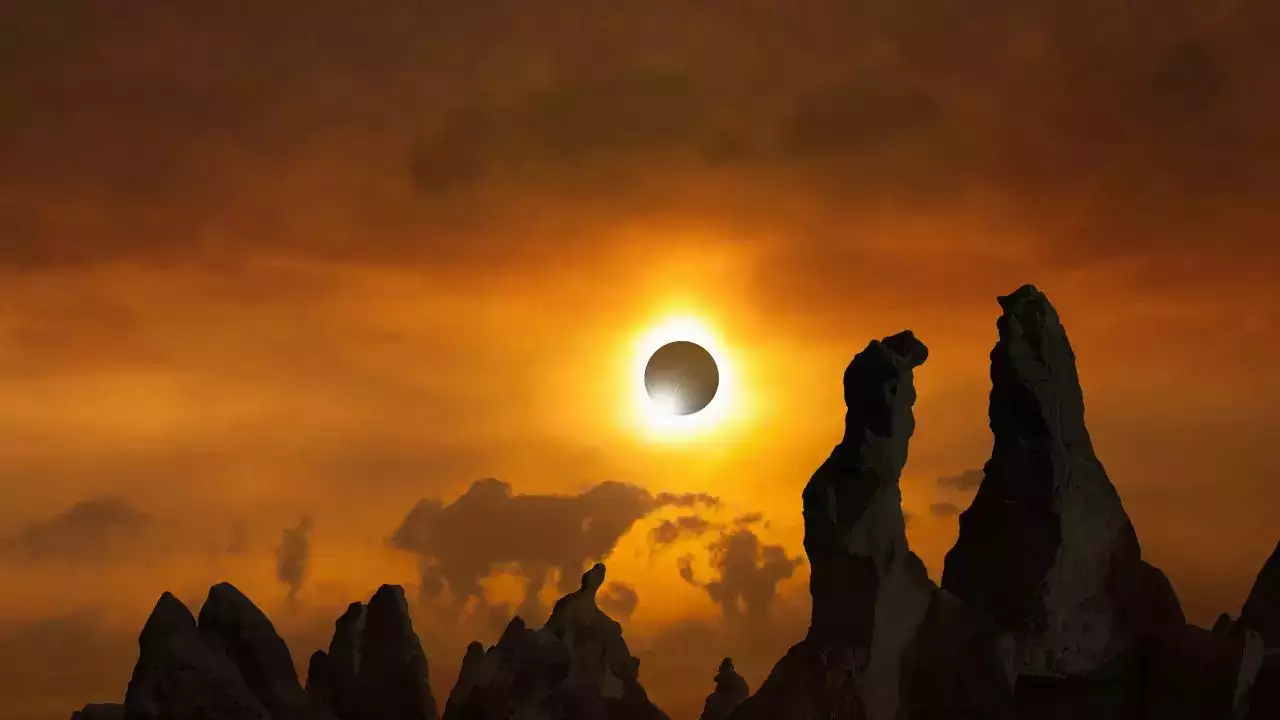Highlights
- Pointing a smartphone camera at the solar eclipse may damage its sensor.
- NASA warns against using magnifying lens attachments without proper filters.
- Capturing the human experience during the eclipse recommended over direct shots.
- Totality phase is the safest moment for direct photography with the right solar filters.
As the clock ticks closer to May 8th, excitement builds for the highly anticipated solar eclipse set to grace skies across the continent.
With the moon’s gradual passage in front of the sun, this celestial event promises breathtaking views – but experts caution against attempting to photograph it directly with your smartphone.
Point Your Phone Away From the Solar Eclipse
We asked our @NASAHQPhoto team, and the answer is yes, the phone sensor could be damaged just like any other image sensor if it’s pointed directly at the Sun. This is especially true if you’re using any sort of magnifying lens attachment on the phone. You would need to utilize…
— NASA (@NASA) April 4, 2024
According to NASA, pointing your phone’s camera at the sun during the eclipse could severely damage its internal components, much like any other image sensor exposed to the sun’s intense rays.
This risk is amplified if you’re using any form of magnifying lens attachment on your phone.
In a tweet, NASA’s photography team (@NASAHQPhoto) emphatically stated, “The phone sensor could be damaged just like any other image sensor if it’s pointed directly at the Sun. This is especially true if you’re using any sort of magnifying lens attachment on the phone. You would need to utilize the proper filters just like on any other camera.”
Instead of risking your device’s well-being, NASA recommends capturing the eclipse’s impact on the surrounding landscape and the reactions of awestruck onlookers. As veteran NASA photographer Bill Ingalls eloquently puts it, “The real pictures are going to be of the people around you pointing, gawking, and watching it. Those are going to be some great moments to capture to show the emotion of the whole thing.”

With totality expected to last approximately 3 minutes and 38 seconds, starting at 3:20 pm EDT, this brief window presents the safest opportunity to directly photograph the eclipse – but only with proper solar filters designed for such purposes.
While the temptation to immortalize the celestial spectacle may be strong, heeding NASA’s advice could save you from an expensive repair or replacement.
Instead, focus your lens on the human experience, capturing the wonder and excitement of this rare astronomical event through the faces of those around you.
FAQs
Can I photograph the solar eclipse with my smartphone?
While it’s physically possible to point your smartphone camera at the solar eclipse, NASA strongly advises against doing so without proper precautions.
The intense rays of the sun can damage the phone’s camera sensor, especially if you’re using magnifying lens attachments.
Attempting to capture the eclipse directly without the right solar filters could lead to permanent damage to your device.
What is the safest way to capture the solar eclipse?
The safest way to photograph the solar eclipse is by focusing on the landscape and the people around you experiencing the event.
Capturing the reactions and emotions of viewers provides a unique and safe way to document the eclipse without risking damage to your smartphone’s camera.
If you wish to photograph the eclipse directly, ensure you use proper solar filters specifically designed for such events.
What are the risks of photographing the solar eclipse without proper equipment?
Photographing the solar eclipse without proper solar filters can severely damage your smartphone’s camera sensor.
The concentrated solar rays can burn the internal components of the camera, leading to costly repairs or the need for a replacement.
It’s essential to use the correct protective gear to avoid any damage.
How can I use my smartphone safely during the solar eclipse?
To use your smartphone safely during the solar eclipse, avoid direct photography of the sun unless you have solar filters that are specifically designed for this purpose.
You can also consider photographing the event indirectly by capturing the changing environment and people’s reactions.
During totality, when the moon fully covers the sun, it’s safer to take direct shots, but caution and proper filters are still advised.
Also Read: NASA Spacecraft Crashes Into Asteroid; Defense Test Affected
Also Read: NASA Rolls Out SLS Rocket to Launch Pad in Florida 10 Days Before Artemis I Launch
Also Read: NASA Unveils Its Very Own NASA+ Streaming Service for Space Enthusiasts
